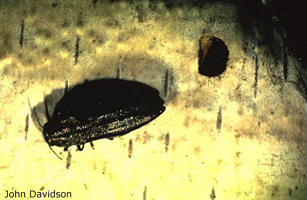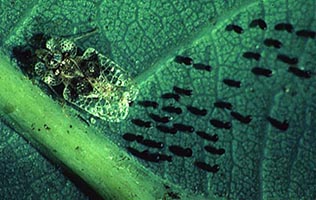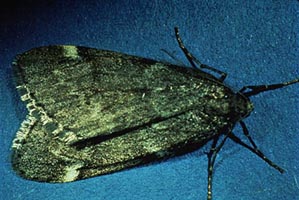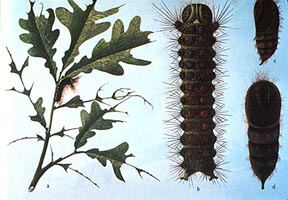|
|
Diagnosis Case: Oak
|
Sometimes the quickest way to diagnose insect problems is to identify the actual insect. See the tables and pictures below. You can study the lifecycle and determine what times of year each insect or insect stage is present. |
| Type of Insect | No. of Generations | Insect Stage | Time they are present | Cankerworm | 1 | Larvae | April - Mid-June (Fall and Spring Cankerworms) |
| Adults | late October (Fall Cankerworm), late March (Spring Cankerworm) | ||
| Flatheaded Apple Tree Borer | 1 | Larvae | follow adults emerging through the summer |
| Adults | May - Summer | Kermes Scale | 1 | eggs | late June and July |
| Adult female | present in same place from onset | Gypsy Moth | 1 | Larvae | early to mid-May |
| Adults | late June - late July |
| Adult flatheaded appletree borer | Adult lace bug guarding eggs |

|
 |
Adult cankerworm female |
Adult cankerworm male |
Cankerworm larvae |
Gypsy moth (all stages) |
Back to Oak Diagnosis
 |
(C) Regents of the University of
Minnesota. All rights reserved. |
 |
 |